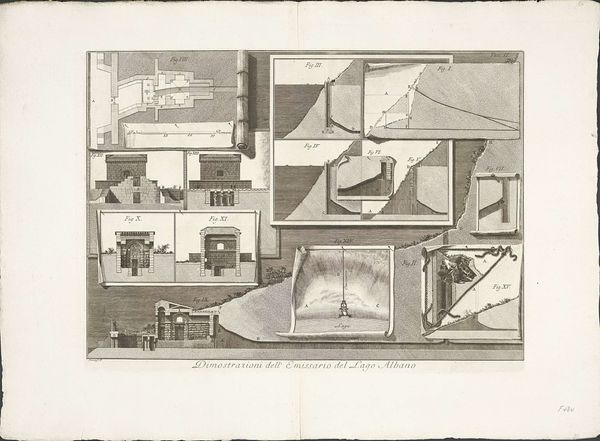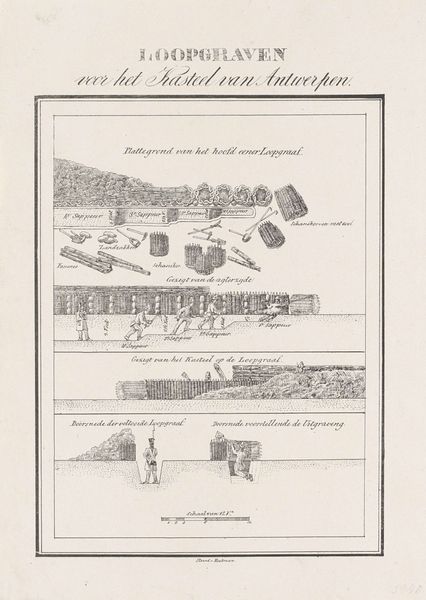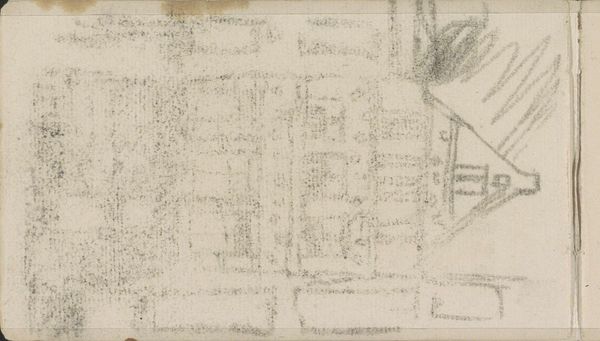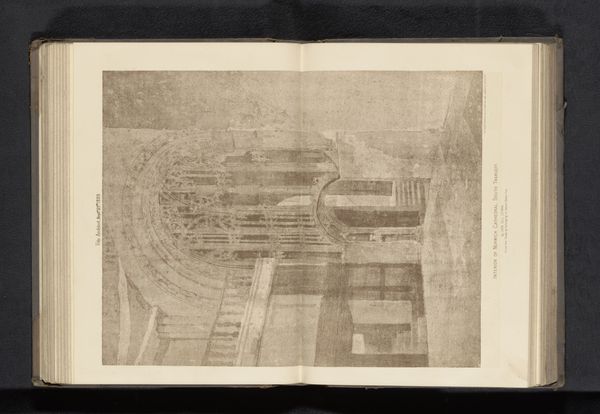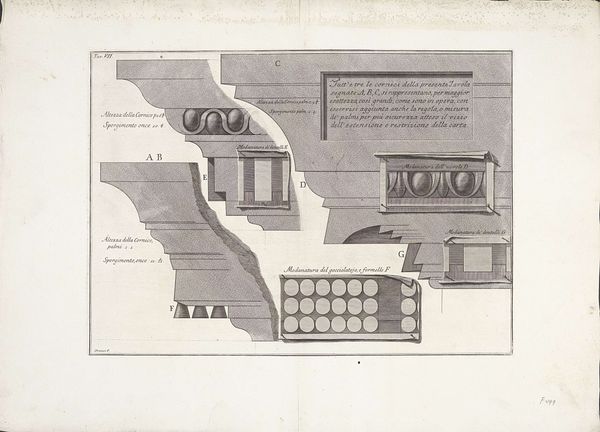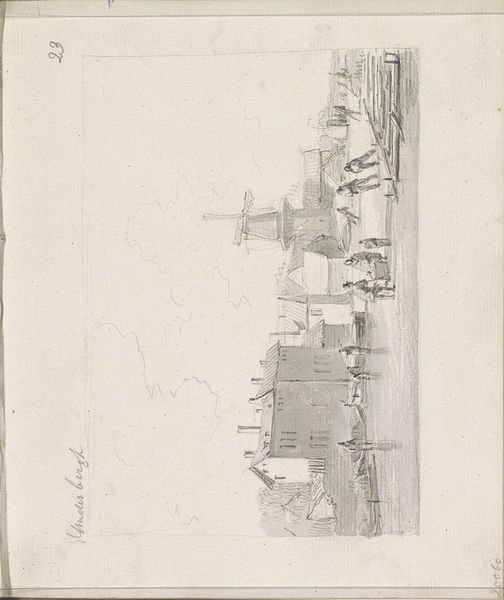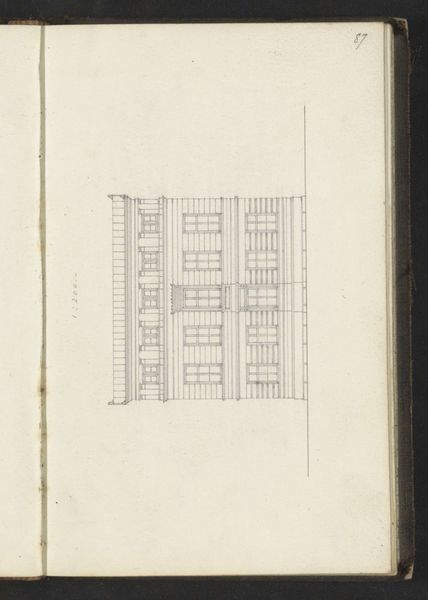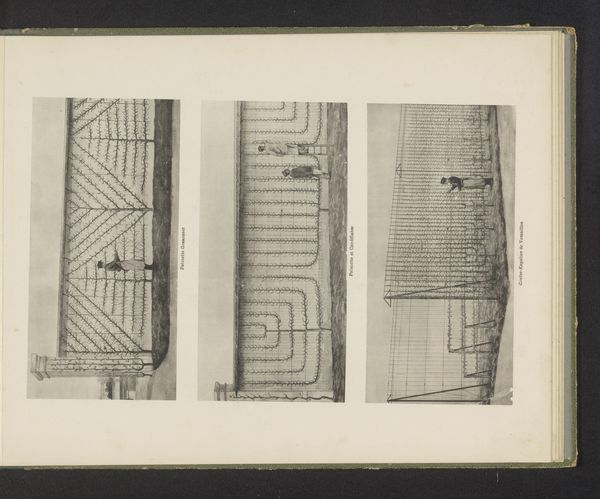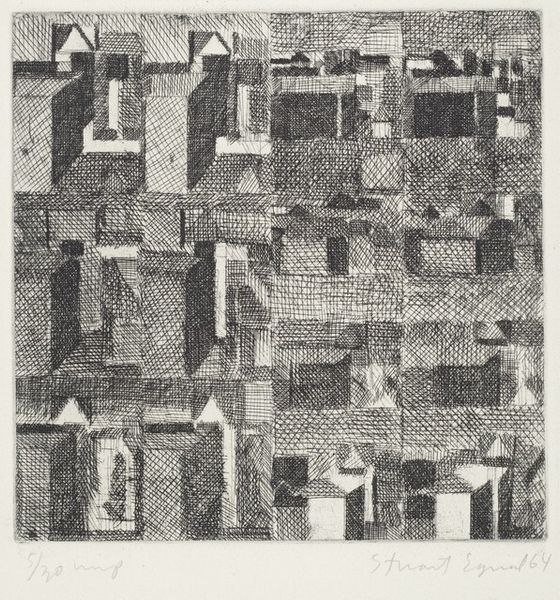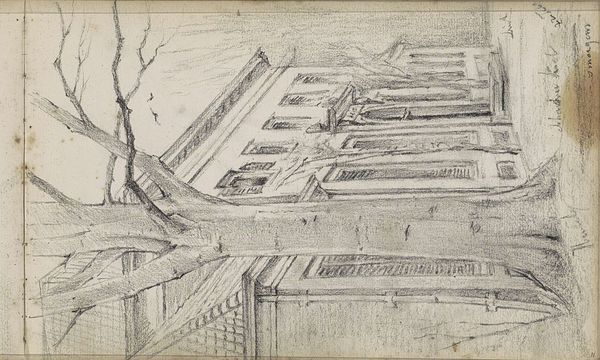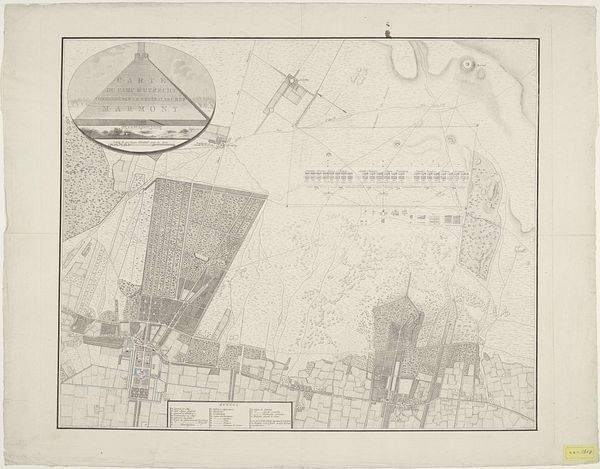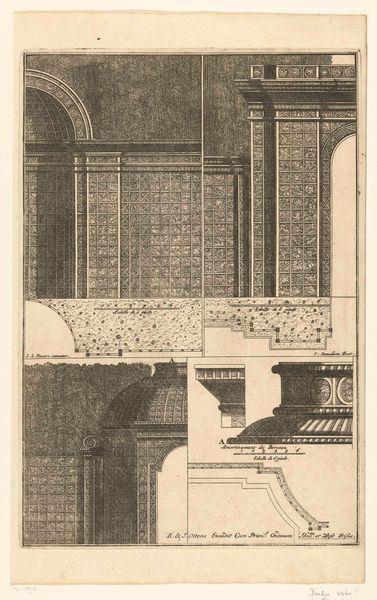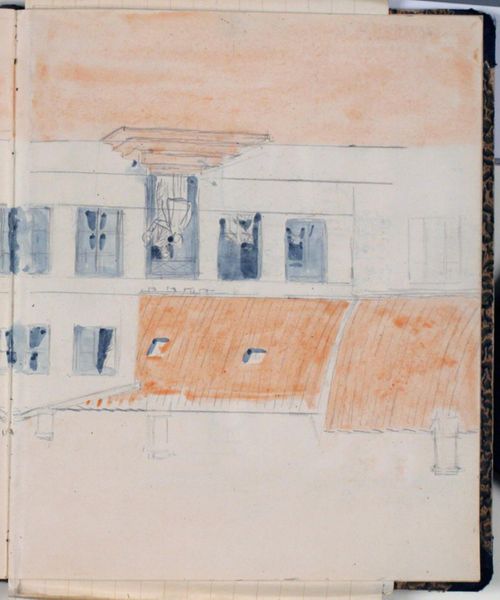
Fundering van de Engelenburcht en de Engelenbrug te Rome c. 1756 - 1757
0:00
0:00
print, etching, engraving, architecture
#
aged paper
#
light pencil work
#
homemade paper
# print
#
etching
#
sketch book
#
hand drawn type
#
landscape
#
perspective
#
personal sketchbook
#
hand-drawn typeface
#
fading type
#
sketchbook drawing
#
cityscape
#
italian-renaissance
#
sketchbook art
#
engraving
#
architecture
Dimensions: height 453 mm, width 1395 mm
Copyright: Rijks Museum: Open Domain
Editor: So, this is "Fundering van de Engelenburcht en de Engelenbrug te Rome" – The Foundation of the Castel Sant'Angelo and the Ponte Sant'Angelo in Rome – an etching by Giovanni Battista Piranesi, from around 1756-1757. The intricate detail and almost diagrammatic quality of this print are striking. What do you make of Piranesi's approach? Curator: Piranesi, for me, embodies the intersection of art, architecture, and power. This isn't just a depiction of a foundation; it’s a statement about Rome’s layered history and how power is literally built upon the past. Notice how he meticulously renders the underpinnings, revealing the hidden labor and structural decisions that sustain the visible grandeur. It is as though he’s peeling back the city’s skin. What does this layering suggest to you about Rome itself? Editor: I guess it shows how the present is always built on the past, that every city has all these layers of history underneath. You see that so clearly here. But why focus so much on what’s hidden? Curator: Exactly! He unveils those unseen foundations as a way to comment on the social foundations that are rarely seen, and frequently taken for granted. What social structures uphold a city? Editor: Things like infrastructure, sure, but also… the people who build and maintain it. I suppose we don't often think about that. Curator: Piranesi highlights not just the architecture but also, implicitly, the labor. By emphasizing these "invisible" aspects of society, Piranesi is making a powerful commentary about whose stories get told and whose contributions are often forgotten in grand narratives of progress and power. We could almost consider it a form of early social archaeology! Editor: Wow, I never would have thought of it that way. I was just thinking about the cool lines. Curator: It’s easy to get lost in the artistry, but considering the social and historical context opens up a whole new layer of understanding, right? Editor: Definitely. It gives the artwork a whole new level of meaning. I'll never look at an architectural print the same way.
Comments
No comments
Be the first to comment and join the conversation on the ultimate creative platform.
